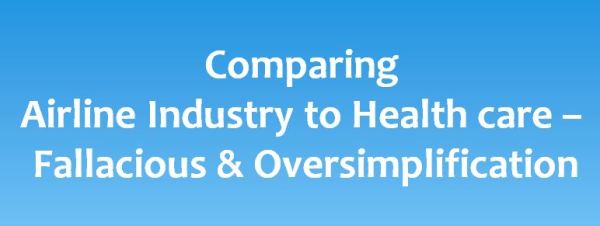“Look at the profit margins of these companies — they’re hundreds of billions of dollars,” Biden said. “It’s not like they’re getting hurt.”
The Indianapolis drugmaker’s price cuts and discounts for insulin come as federal and state lawmakers and patient advocates pressure drug companies and health insurers to improve affordability for the lifesaving medication used by millions of Americans. The move follows criticism from federal lawmakers and advocacy groups.
The noise level in the news regarding expensive medical costs is high. So who’s to blame? Frequently buck stops at naming the doctors without really doing proper root cause analysis, not infrequently hiding the real culprits. It is easy to point the finger at calling the medical professionals greedy to keep the veil over mammoth medical and pharmaceutical industry. But there is a whole system of unregulated medical business associated with large and various health care industries: for example pharma industry, biomedical, equipment, consumables etc. These industries although play important part in medicine, cost, sale and purchase, but are largely remain unregulated and remain hidden to the patient.
Pharmaceutical Companies associated with the production and pricing of the drugs have contributed to the problem and has negatively affected the patient’s expense, directly and indirectly.
When it comes to prescription drugs, rampant inflation has been the norm for decades. Drugmakers fearlessly increase prices on hundreds of medications every year because each of their products has no or few competitors. If the cost of a medication are kept high, that would increase directly influences the cost of health care for individuals.
.
Eli Lilly cuts insulin prices up to 70% amid pressure to slash costs
Drug giant Eli Lilly said Wednesday it will slash the cost of its top-selling insulin drugs by 70% as Congress remains stalled on capping prices on the medication vital to millions of Americans who suffer from diabetes.
The Indianapolis-based drugmaker also will lower the price of its Lispro insulin injection to $25 a vial and expand its insulin value program so that an existing $35 cap on some insulins will now apply in about 85% of US pharmacies.
The move comes as President Biden has pushed to extend to most Americans the $35 cap on out-of-pocket insulin costs available to recipients of the government’s Medicare health program, a move some lawmakers have also said they would support with legislation.
“While we could wait for Congress to act or the healthcare system in general to apply that standard, we’re just applying it ourselves,” Chief Executive Dave Ricks told CNN in an interview.
The changes could help around 2 million people pay for the life-sustaining drug. Although many people, including some 3.3 million on Medicare, already pay $35 a month or less for insulin, about 1-in-5 with private insurance and the 17% of insulin users who are uninsured stand to benefit.
Eli Lilly, along with Sanofi and Novo Nordisk make up 90% of the US market for insulin. Lilly shares were up 1.3% at $315.30.
Some analysts have suggested the company was trying to get out ahead of lawmakers. “It certainly appears they were reacting to the growing chances that Congress is going to cap insulin prices,” said Brian Gardner, chief Washington policy strategist at Stifel investment firm.
The insulin products currently cost hundreds of dollars a month. Humalog reportedly has a list price of $530 for a five-pack of injection pens and $274 for a vial, though the company said it only costs less than $95 a month for patients with commercial insurance and Medicare. List prices for drugs often differ from what patients actually pay, including after insurance and other assistance programs.
While the $35 price is only available in pharmacies participating in the company’s insulin value program, Ricks said patients using other pharmacies can receive a rebate through the drugmaker’s website.
These price cuts “should be the new standard in America,” Ricks said, and he called on other companies and stakeholders “to meet us at this point.”
Around 8.4 million of the 37 million people in the United States with diabetes use insulin, according to the American Diabetes Association. Ricks said the company’s insulin price cuts had been planned for some time and were accounted for in Eli Lilly’s December financial forecast, which projected 2023 revenue of at least $30.3 billion.
Diabetes is the seventh leading cause of death in America. Those needed the medication spend an average of $16,752 a year, The Post reported.
In addition to substantial price reduction, Eli Lilly said it would launch on April 1 a new insulin product called Rezvoglar — a copycat version of Sanofi’s Lantus insulin. It will sell its version for $92 for a five-pack of injection pens, a 78% discount to the list price for Lantus.
Advantages-Disadvantage of being a doctor
25 factors- why health care is expensive
21 occupational risks to doctors and nurses
Covid paradox: salary cut for doctors other paid at home
Medical-Consumer protection Act- Pros and Cons
Expensive Medical College seat- Is it worth it?
NEET- Not so Neat- percentile system
The Myth of cost of spending on medical education needs to be made transparent.











